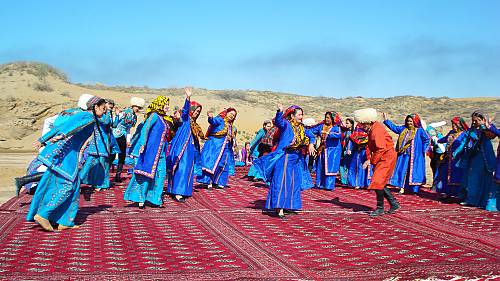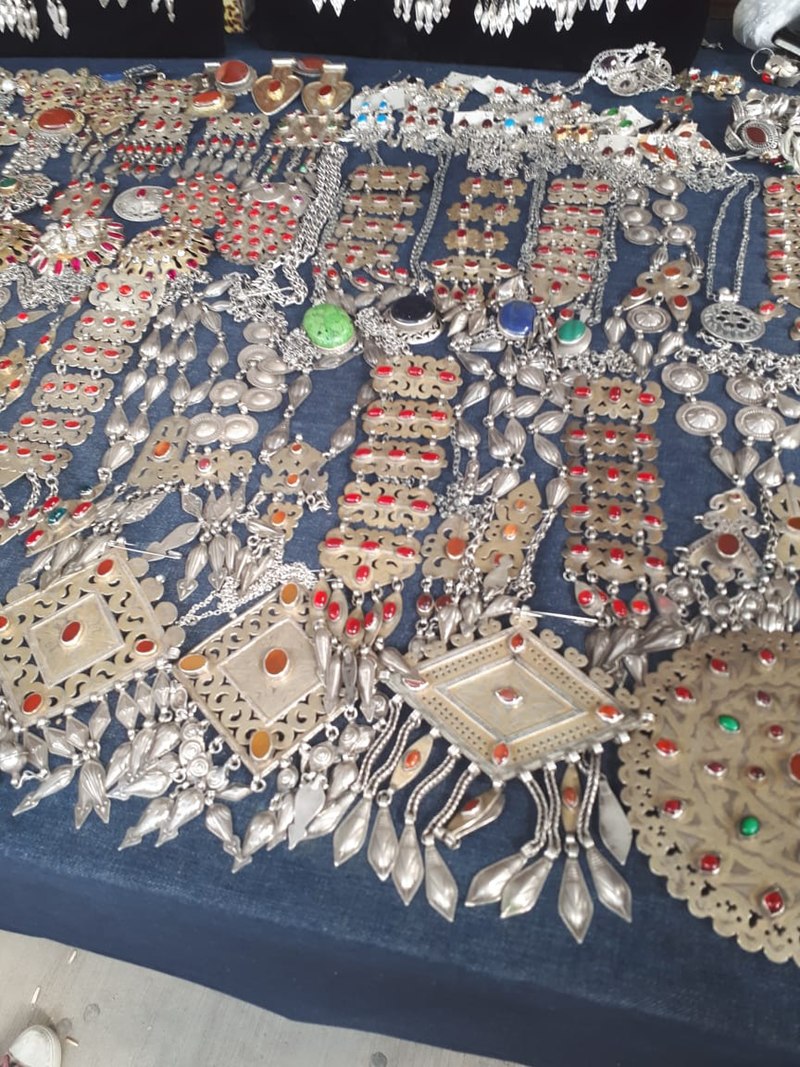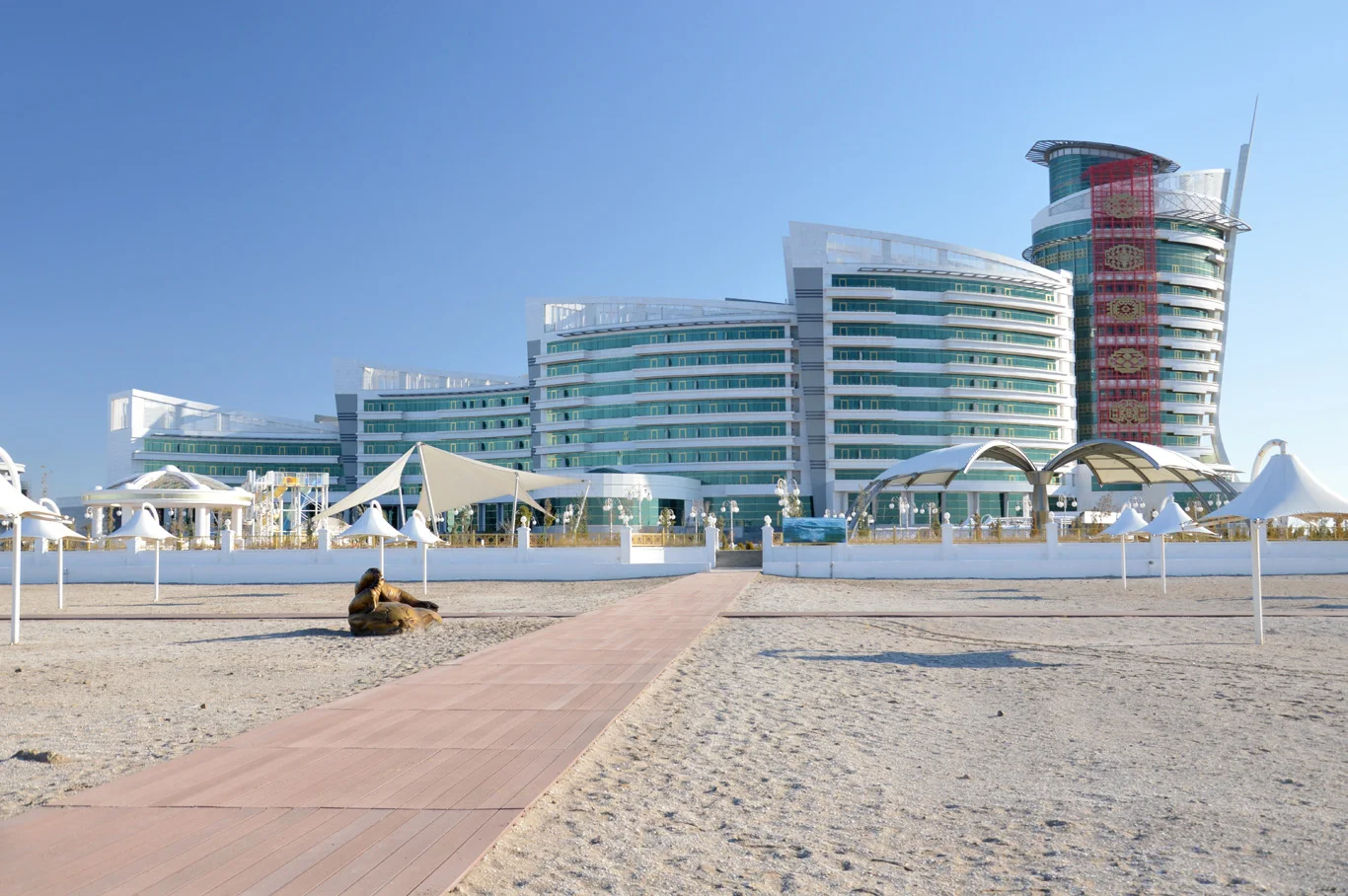 |
| I snacked on a bit of this bread, and I have to say it pairs well with cabernet sauvignon. |
So, today I’m making food from Turkmenistan. The first thing I made was Çörek. I’m actually using this bread as part of the next dish. So, in a large bowl, I mixed my yeast in some warm water and let it sit for a few minutes, then I added in my salt and flour. I mixed everything together with my hands for a few minutes until it formed a rough dough. After I kneaded it until it was smooth, I covered the bowl with a little bit of wax paper and let it rise for a bit. When it started to rise after about a half hour, I moved it to a lightly floured surface, patted it down and shaped it into a disk about ¾” thick by 12” in diameter. Then I covered it again and let it rest for about 20 minutes. Once the oven heated up to 480ºF, I put the bread on a baking sheet that I dusted with flour and then poked holes all over the top of the bread with a fork. I brushed the bread with a bit of water, and then placed the baking tray on the middle rack and baked it for about 18 minutes or until it turned golden brown. I thought the bread by itself was really good. It would make a good bread to dip into soup or stew. It seems kind of a basic bread, but there’s a reason these variations have lasted forever.
 |
| Outside of the saltlick broth, this wasn't that bad. Gonna try to salvage this. |
One of their most well-known dishes is Dograma. I placed some stew beef and some water in a large pot and brought it to a boil over high heat. After it started to boil, I skimmed off the fat scum from the top and added in my salt. Reducing the heat to medium, I covered it and let it simmer for about 20 minutes. Then I threw in a can of diced tomatoes. I let this simmer for a while until the meat was super tender. In a bowl, I tore pieces of the çörek bread I made earlier into small pieces. Then I tossed in some onion slices and mashed/rubbed them together with my hands. On a cutting board, I removed the meat from the broth and shredded it with my hands. Then I added that to the bread and onions and mashed them all together with my hands. At this point, I took about 3-4 Tbsps of the broth and poured it over the bread-onion-meat mix and let it soak up for a few minutes. To assemble this, I placed some of this mixture in a bowl, added some black pepper to it, and then ladled some of the broth on top of it. I really messed my broth up. I either used way too much salt or didn’t add in enough water. Anyhow, it was just way too salty for any of us to eat. I may try to remake some broth to use in it for later. The rest of it wasn’t bad.
 |
| This was clearly the winner! I will definitely make this again. |
The next dish I made was Palaw, or Turkmen Pilaf. I made this one with chicken, and I cut them into bite-sized pieces that I mixed with some salt. In a large pot, I heated some oil and browned my chicken pieces and then added in some onion. Once the onion became soft, I threw in some shredded (or julienned) carrots and fried them together for five minutes. After adding some more water, I turned the heat up on high and let it boil for five minutes. Then I took my rice that I had soaked in warm water and drained and added it to the pot with the meat and veggies. I kept the lid off, and as soon as the rice had started to absorb some of the water, I took my spoon and made holes in the rice to allow for more even cooking. I lowered the heat to low-medium and covered the pot, letting it steam for about 20 minutes (it’s ok to stir once or twice during this). When the rice is soft, stir everything up and serve it warm. I immediately recognized this smell when I took the lid off. I tasted almost exactly like my mom’s chicken and rice that she used to make when I was a kid (except that she added in some celery). This was the big hit with my family. We all enjoyed it very much.
 |
| Two out of three ain't bad. |
One thing I noticed with these dishes was the lack of spices. Essentially salt and pepper. But for being a landlocked country that’s mostly desert, it makes sense. But that didn’t mean their food was bland. They figured out ways to flavor food by using the fat from the broth, for example. Mashing the onions into the meat and bread was another. Needless to say this isn’t a meal for those on a diet. But it was tasty, and in high-stress times like these, sometimes I’d rather just find my happiness where I can get it.
Up next: Tuvalu













































